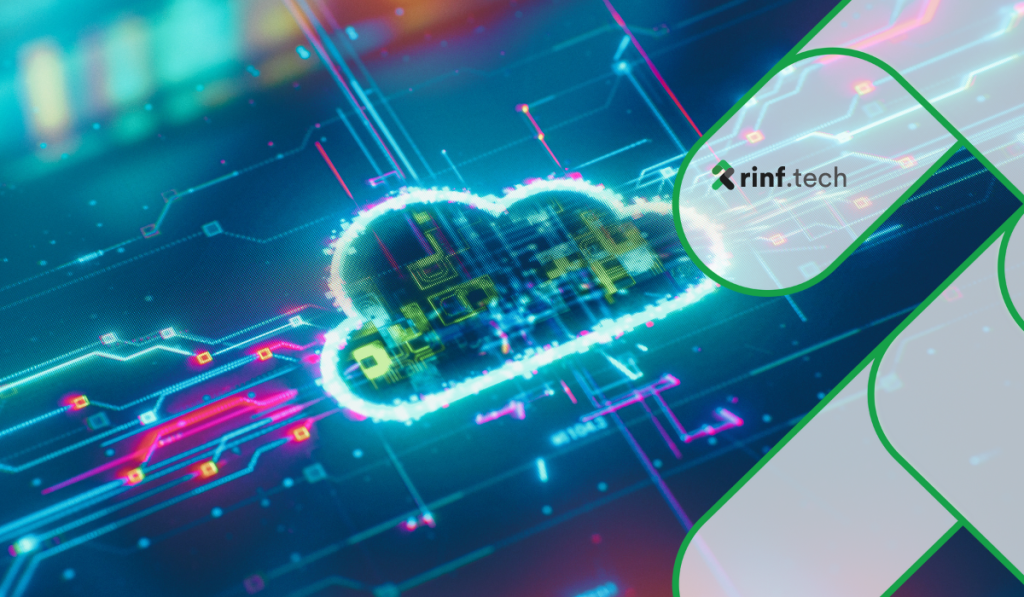
Navigating Cloud Migration: Overcoming Challenges and Maximizing Benefits
Exploring some of the key considerations and challenges in migrating legacy applications to the cloud and sharing practical strategies for a successful transition.
Top 3 Use Cases Across Industries
We are still using the term Closed Circuit Television (CCTV) to refer to video surveillance solutions. Just like we still use phrases like “hang up” when ending a conversation on a mobile phone, CCTV also refers to new technologies like cloud-based smart surveillance systems.
Over the decades, CCTV cameras kept getting better with improved image capture and recording features. Cloud-based CCTV systems have taken it to another level, eliminating wires and complex hardware and optimizing security protocols across industries.
As such, cloud-based video surveillance as a service (VSaaS) offerings are going through a period of significant growth from $3.3 billion this year to reach $7.6 billion by 2027 (growing at a compound annual growth rate of 18% over five years).
The rise in VSaaS adoption can be attributed (at least in part) to increased CCTV implementations in the retail, transportation, and manufacturing sectors. Whether it’s a restaurant, mom-and-pop shop, or small factory space, cloud-based CCTV systems provide real value for all kinds of business models.
Retailers have depended on CCTV security for decades. Across the industry, video surveillance worked as a key crime deterrent and evidence of theft. Most often, shoppers themselves can see the cameras and security monitors around the store.
Today, cloud CCTV helps retailers remotely monitor stores, protect employees, and protect against theft and fraud. However, cloud CCTV goes far beyond security.
Retailers can also leverage cloud-based CCTV systems to manage multiple locations in real-time efficiently. They can also use this technology to understand customer behavior better, provide improved services, and handle different challenges across retail outlets.
For example, when a leading European retailer reached out to rinf.tech for a video surveillance solution, we built a best-in-class system to enable facial recognition, queue detection, people counting, and activity-based visualization and analytics.
This approach helped
Retailers can also integrate behavioral analytics solutions powered by Artificial Intelligence (AI) to optimize their video surveillance protocols.
The pandemic brought cloud-based CCTV systems in the transportation sector to the forefront. Cloud or hosted video surveillance technologies helped businesses stay connected and stay afloat while following strict guidelines provided by the health department.
Cloud CCTV comes with a wide range of applications across the transportation sector. For example, cloud-based CCTV cameras across stations, vehicles, and transport hubs help staff work in a safer environment, assure fearful passengers, and more.
Cloud video surveillance also helps the industry manage occupancy across bus and rail services more efficiently. For example, Adcomms, one of the leading transport telecom companies, reached out to rinf.tech to build a video surveillance system that facilitates remote access to CCTV video footage on trains.
So, we built a robust solution that enabled the following:
By monitoring staff and passenger movement, management can also initiate changes to the layout of the train or bus station. This approach helps optimize services offered at the station and customer experiences.
By counting people from entrances and exits, transportation companies can also better manage occupancy levels. You can also enable real-time alerts whenever someone breaches safety and security protocols.
As many smart cameras also come with a speaker, you can also play pre-recorded messages to alert or inform passengers. Finally, frictionless access control helps staff work efficiently in a ‘hands-free’ working environment.
From a security perspective, cloud video surveillance also allows transportation service providers to optimize security checks at airports, enhancing queue management and preventing jams. In this scenario, when long lines are detected, the system can automatically provide instructions to staff and visitors via digital displays to go to a second queue.
By the way, rinf.tech won Romania’s IT Excellence Awards 2023 with this project in the category “Software Outsourcing Project of the Year.”
Cloud-based video surveillance in manufacturing enables real-time remote monitoring of facilities. This approach to supervising multiple factory locations is more convenient and efficient than being physically present onsite.
Supervisors and staff can view historical video surveillance footage to identify opportunities for improvement, optimize maintenance protocols, and ensure compliance.
Cloud CCTV and AI together can help mitigate the risk of workplace accidents and other manufacturing-related hazards. Through real-time monitoring and pattern recognition, smart algorithms can alert staff and management to potential risks.
Management can also use video footage to conduct safety reviews, provide evidence to resolve liability claims and optimize safety protocols. Similarly, manufacturers can also use video footage to visualize the current state of operations. In this case, they can document continuous improvement procedures, identify opportunities to optimize productivity, and streamline user management and reporting.
Beyond the factory floor, cloud-based video surveillance also helps secure products and raw materials in warehouses and while they are being transported. Supervisors can also better manage deliveries in real-time when paired with smart alerts.
This approach can be extended to optimize inventory management. For example, smart cameras and cloud technologies provide transparency into shipping timelines. With real-time monitoring, factory managers will also know precisely what materials are running low and how soon they can replenish them.
High-value assets can also be secured in this manner to avert theft or accidents. When integrated with access controls, these surveillance systems can also prevent unauthorized personnel from entering restricted areas.
As cloud CCTV systems are cost-effective, we can expect to see increased adoption across industries. After all, it’s a significant departure from traditional large-scale CCTV systems that demanded robust servers to store video footage.
Large external storage devices like a Digital Video Recorder (DVR) or a Network Video Recorder (NVR) were typically expensive to repair or replace. It was also challenging to provide a single point of failure for the entire security system. The cloud eliminates all these costs and complications and enables smart surveillance that provides much more than security.

Exploring some of the key considerations and challenges in migrating legacy applications to the cloud and sharing practical strategies for a successful transition.

This article offers organizations a comprehensive guide to navigating the complexities of transitioning legacy applications to cloud infrastructure.

Delving into the essence of successfully implementing ML projects, exploring strategic approaches, the comprehensive life cycle from conception to deployment, and real-world industry applications.